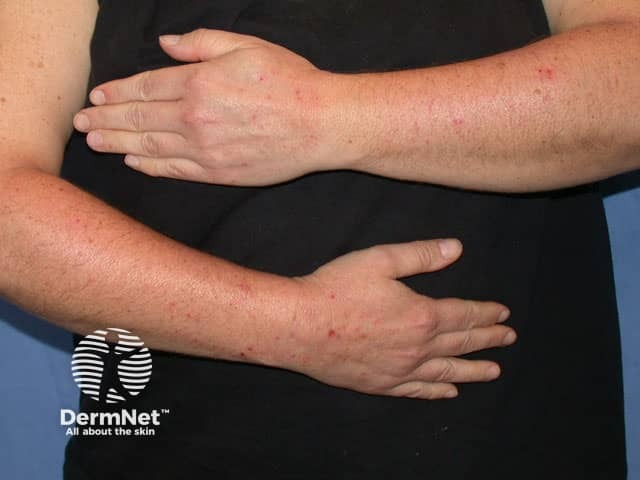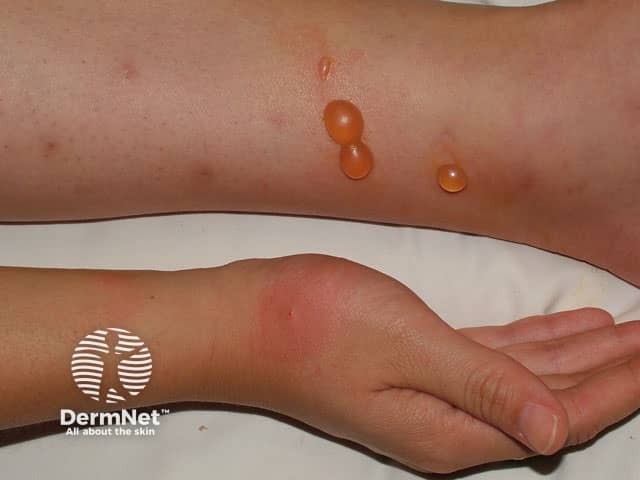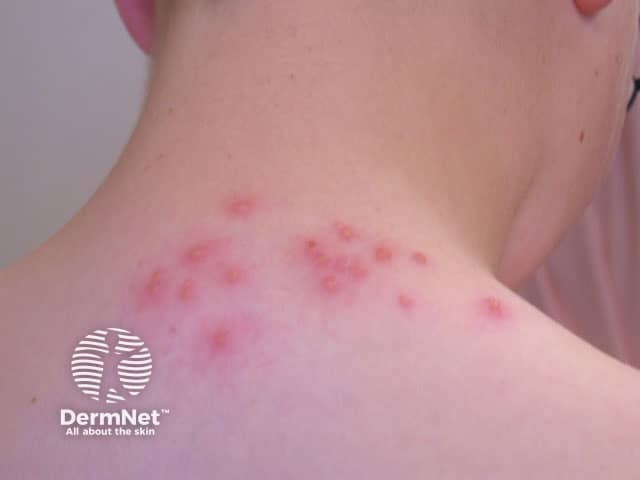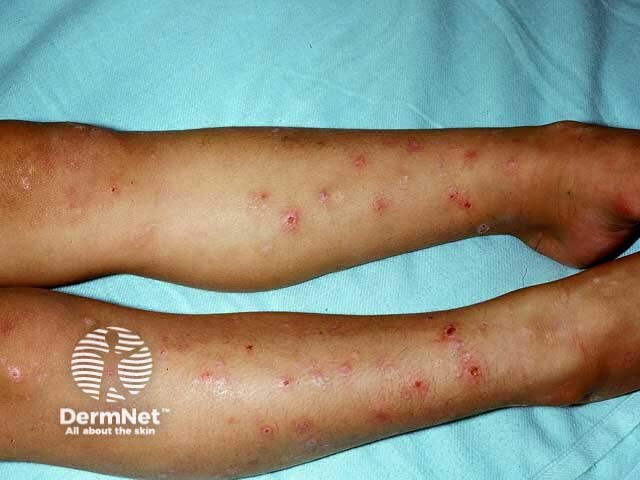Main menu
Common skin conditions

NEWS
Join DermNet PRO
Read more
Quick links
Author: Dr Amanda Oakley, Dermatologist, Hamilton, New Zealand, 1997. Update: Dr Oakley and Dr Karen Koch, Consultant Dermatologist, WITS Donald Gordon Mediclinic, Johannesburg, South Africa. March 2018. DermNet revision August 2021.
Introduction Demographics Causes Clinical features Complications Differential diagnoses Diagnosis Treatment Outcome
Papular urticaria is a papulovesicular reaction to insect and arachnid bites more common in children than in adults. It presents during the summer or autumn months. It is also called a persistent insect bite reaction.



Papular urticaria most often occurs in children. This is because desensitisation to insect bites has not yet developed.
It may also occur in adults, especially in travellers to new environments.
Papular urticaria is thought to be an immunological reaction to insect bites. The reaction settles after a few months or years, as the person becomes desensitised to the bites. The initial bite is rarely noticed.
Fleas and mites that live on cats and dogs are most often responsible.
Not everyone with papular urticaria has pets, and it can sometimes be difficult to work out what a patient is reacting to. There have been reports of reactions to mosquitoes, bed bugs, gnats, bird mites, carpet beetles, caterpillars, and other insects.
Papular urticaria presents with clusters of itchy red bumps (papules) without systemic symptoms.
The spots remain for days to weeks and can leave postinflammatory pigmentation or hypopigmented scars, especially if they have been scratched deeply.

Papular urticaria is usually a clinical diagnosis. A biopsy may support the diagnosis, as insect bites have a characteristic microscopic appearance.
The histopathology of papular urticaria includes mild dermal oedema, extravasation of erythrocytes, interstitial eosinophils, and exocytosis of lymphocytes. Vasculitic features may be noted.
Papular urticaria is normally self-limiting. The immunological basis of this reaction means that it may take months or even years for children to become desensitised to the offending insect. Papular urticaria may clear up on holiday or after moving house.
Occasionally the eruption can clear for years and then recur unexpectedly.